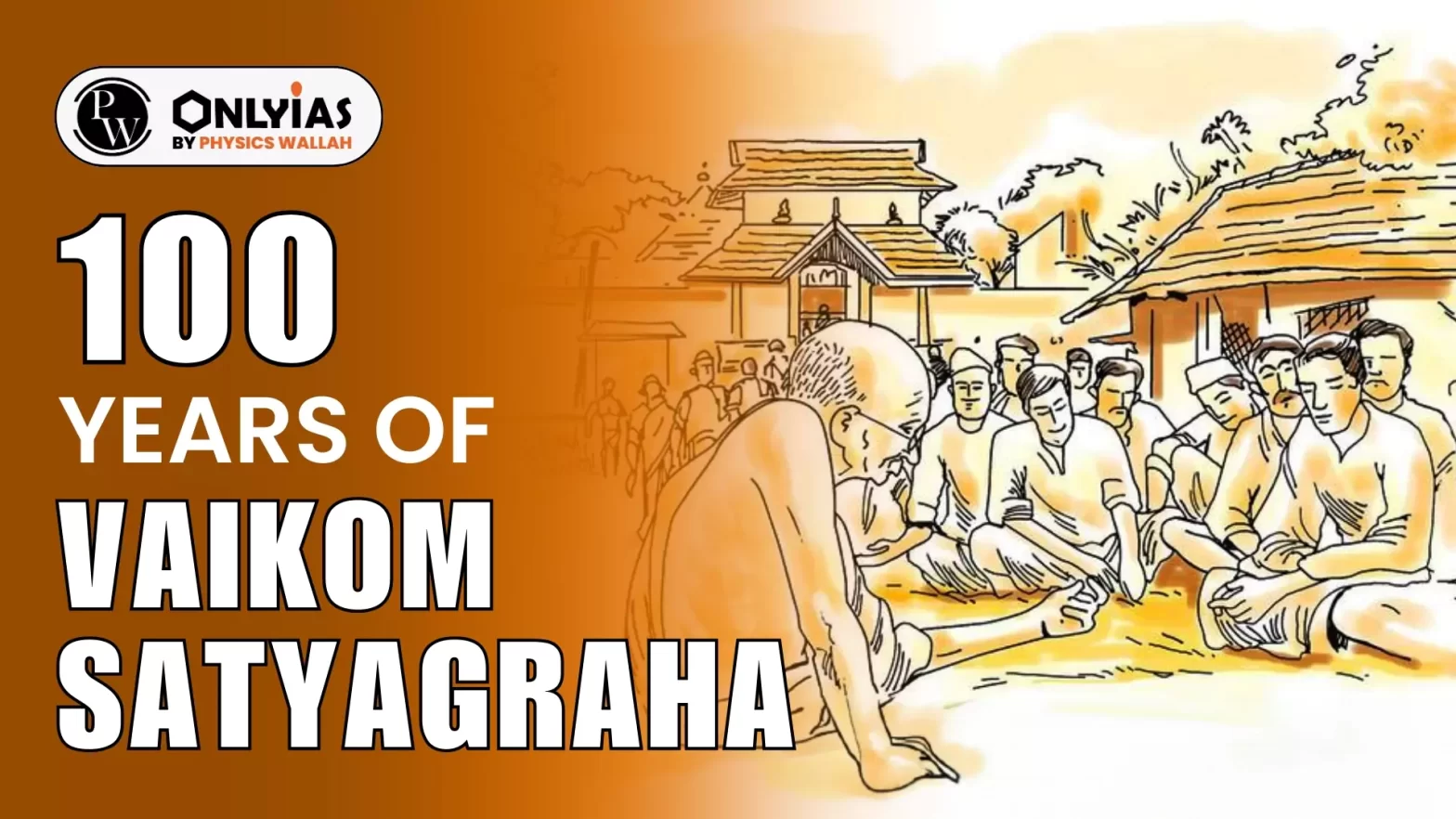Context
Vaikom Satyagraha has completed 100 years on March 30, 1924.
Background of Vaikom Satyagraha
- Temple Entry Ban: According to the prevalent caste system in Kerala and the rest of India, low-caste Hindus were not allowed to enter into the temples.
- In Kerala, they were not allowed even to walk on the roads that led to the temples also.
- Discrimination: In the Kakinada meet of the Congress Party in 1923, T K Madhavan presented a report citing the discrimination that the depressed castes’ people were facing in Kerala.
- It was after this session that movements against untouchability need to be promoted.
- Formation of Committee: In Kerala, a committee was formed comprising people of different castes to fight untouchability
- The committee was chaired by K Kelappan, composed of T K Madhavan, Velayudha Menon, K Neelakantan Namboothiri and T R Krishnaswami Iyer.
- Launch of Temple Entry Movement: In February 1924, launched a ‘Keralaparvatanam’ in order to get temple entry and also the right to use public roads for every Hindu irrespective of caste or creed.
About Vaikom Satyagraha
- Overview: Vaikom Satyagraha (1924-25) was a satyagraha in Travancore, India (now part of Kerala) against untouchability in Hindu society.
- Centre of the Vaikom Movement: The movement was centered at the Shiva temple at Vaikom, near (present district) Kottayam.
- Aim of the Movement: The Vaikom Satyagraha aimed at securing freedom to all sections of society through the public roads leading to the Sri Mahadeva Temple at Vaikom.
Mahatma Gandhi’s Association with Vaikom Satyagraha
- Non-Participation: While he was consulted at every stage of the Satyagraha, Gandhi neither led it nor participated in it.
- Visit of Gandhi: He visited Vaikom only once during the 20-month-long struggle from 1924 to 1925.
- Gandhi’s 10-day visit was, however, a turning point, and led it to its ultimate triumph.
-
Three Proposals of Gandhi
-
- First Proposal: The first was to hold a referendum among all adults in either Vaikom or in Travancore.
- Second Proposal: The second was mediation, if this proposal was accepted, Gandhi would nominate Madan Mohan Malaviya to represent the satyagrahis.
- Third Proposal: The orthodox should produce a scriptural text that authorised the practice. Gandhi left it to the orthodox to choose.
-
- Acceptance of Third Proposal: The orthodox accepted the third proposal and produced a text called Sankara Smriti in their defence.
- Authenticity of Text: Gandhi doubted the authenticity of the text but promised to get back after consulting experts in the matter. Vallathol Narayana Menon confirmed that it was not reliable.
- Meeting with Maharani Regent: Gandhi next met the Maharani Regent as she expressed her position in favour of opening all public roads.
Conclusion
In November 1936, the Maharaja of Travancore signed the Temple Entry Proclamation which removed the age-old ban on the entry of marginalized castes into the temples of the state, was the great success of the Vaikom satyagraha.
Also Read: New Social Movements In Agrarian And Worker Struggles
| Prelims PYQ (2016):
The ‘Swadeshi’ and ‘Boycott’ were adopted as methods of struggle for the first time during the
(a) Agitation against the Partition of Bengal
(b) Home Rule Movement
(c) Non-Cooperation Movement
(d) Visit of the Simon Commission to India
Ans: (a) |
![]() 2 Apr 2024
2 Apr 2024

